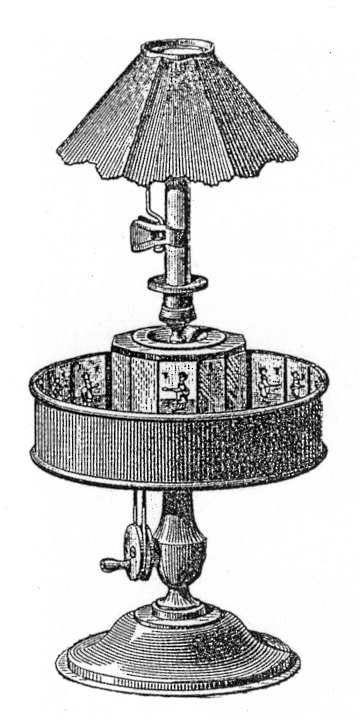 Charles-Emile Reynaud was a French science teacher who projected the first animated cartoon films. He is known for inventing the Praxinoscope in 1877 which was an adaption of the zoetrope and the phenakistoscope. He also created Theatre Optique in December 1888.
Charles-Emile Reynaud was a French science teacher who projected the first animated cartoon films. He is known for inventing the Praxinoscope in 1877 which was an adaption of the zoetrope and the phenakistoscope. He also created Theatre Optique in December 1888. The praxinoscope consists of a cylinder and a strip of paper which shows twelve frames for animation. As the cylinder is rotating, stationary mirrors that are in the centre show the animation in motion. This toy became a commercial success and got recognition at great exhibitions of the period.

The praxinoscope was an improvement of the zoetrope where the narrow slits were replaced with the inner circle of mirrors that reflected the pictures that appeared. As the wheel was turned, the viewer would look in the mirror and see a rapid succession of images which produced the illusion of a motion with a less distorted and brighter picture than the zoetrope.
There were some limitations to the praxinoscope which affected it. If the cylinder was spun too fast, the picture shown would look very blurry which defats the point of the praxinoscope. Also, if spun backwards, it did not make any sense. With the praxinoscope, unlike the phenakistocope more than one person could view it at the same time and also from multiple angles because of the mirrors all around.

By using the principle of the praxinoscope, Reynaud found out a way to project the many series of pictures onto a bigger screen which he called Theatre Optique. Unlike the normal praxinoscope that only showed a short animation, Reynaud used a longer roll of paper to increase the number of pictures so that the animation was longer. This was the beginning of cartoon animation.
Source(s):
http://www.emilereynaud.fr/en/index.php/post/The-Praxinoscope
http://courses.ncssm.edu/gallery/collections/toys/html/exhibit11.htm
No comments:
Post a Comment